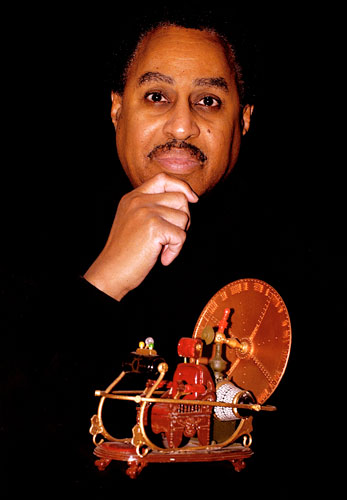Stranger than fiction? Yeah, right.
A scientist obsessed with time travel, who says he has discovered a way to send matter hurtling through time using swirling rays of light, will lead a panel of intrepid authors and scientists as part of a Dec. 8 Philip K. Dick Film Festival — where discussion will look at how today’s fiction informs tomorrow’s technology.
“People don’t realize that what we call modern science was, in fact, previously considered to be science fiction,” said Dr. Ron Mallett, a physics professor from University of Connecticut who frequently appears on television program’s such as the History Channel’s “The Universe” to discuss his breakthrough’s regarding the nature of time.
Like all modern gentlemen of science, Dr. Mallett was practically raised by “Star Trek,” a show chockablock with clunky, beeping gizmos contemporary science has already surpassed in many ways — making the average Joe a regular Captain Kirk.
“I’m a big fan of Star Trek, where you had Spock with this clunky communicator and now every kid on the block has something far more sophisticated than anything they had on the show,” Mallett explained.
Other “Star Trek” tech more marvelous than an iPhone, such as cloaking fields and teleportation beams, may not be long in the coming, according to the professor.
“Physicists are seriously working on what is known as quantum teleportation, which is in the realm of real physics,” said Mallett, who will moderate the discussion titled “Is Science Fiction the Science of the future?”
“Also going on right now, scientists are manipulating light using meta materials and they’re beginning to develop cloaking.”
Mallett’s fascination with time travel, which drove him to physics and ultimately towards developing a method of manipulating space and time using red lasers that he’s dubbed appropriately “space time twisting with light,” stemmed from his childhood trials and his love of H.G. Wells’s immortal “The Time Machine.”
The professor’s father was a strong man with a weak heart, who ultimately perished of a heart attack at the age of 33, a few months before Mallett fell for Wells’s science fiction romp through time.
“I was 11 when I discovered H.G. Wells’s book, ‘The Time Machine,’ and it actually altered my life,” said Mallett. “I thought, ‘what if I could build a time machine and see [my father] and maybe save his life.”
Wells’s novel ultimately led to Mallett’s startling breakthrough.
“I found that a circulating beam of light causes a twist in space,” Mallett explained. “I was able to show that if the twisting of space is strong enough, you can twist time into a loop. Essentially, I discovered a time machine using light.”
“Is Science Fiction the Science of the Future” at IndieScreen [289 Kent Ave. between S. First and S. Second streets in Williamsburg, (347) 227–8030, www.indiescreen.com]. Dec. 8, 2:15 pm. Free.
Reach reporter Colin MIxson at cmixson@cnglocal.com or by calling (718) 260-4514.























